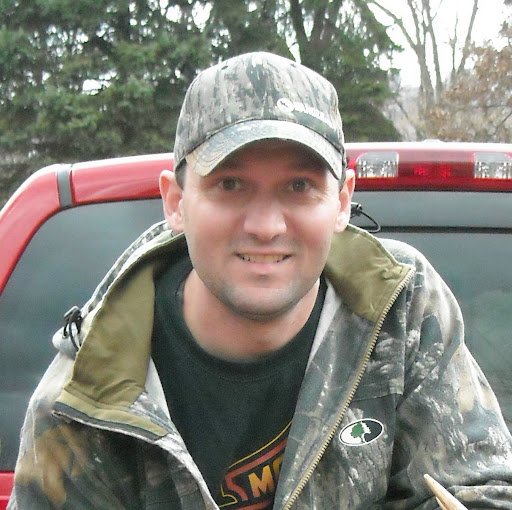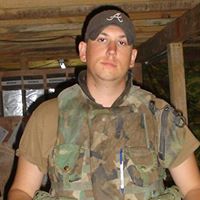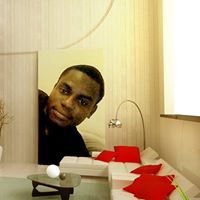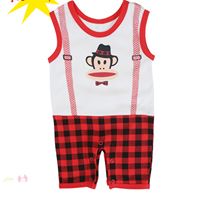Frank W Paul
age ~87
from Seneca, SC
- Also known as:
-
- Frank Waters Paul
- Gail H Paul
- Paul H Gail
- Phone and address:
-
2932 Bayshore Dr, Seneca, SC 29672
8648820077
Frank Paul Phones & Addresses
- 2932 Bayshore Dr, Seneca, SC 29672 • 8648820077 • 8038820077
- 2940 N Bayshore Dr, Seneca, SC 29672 • 8648820077
- Waterville, PA
- 808 Meece Mill Rd, Pickens, SC 29671 • 8648785734
Resumes

Manager At Sanyo
view sourcePosition:
manager at Sanyo
Location:
United States
Industry:
Electrical/Electronic Manufacturing
Work:
Sanyo
manager
manager

Stage Man At Not Working
view sourcePosition:
stage man at not working
Location:
United States
Industry:
Music
Work:
not working
stage man
stage man

Frank Paul
view sourceLocation:
United States

Frank Paul
view sourceLocation:
United States

Frank Paul
view sourceLocation:
United States

Frank Paul
view sourceLocation:
United States
License Records
Frank John Paul Salerno
License #:
7333 - Expired
Category:
Pharmacy
Issued Date:
Aug 24, 2010
Effective Date:
Sep 1, 2015
Expiration Date:
Sep 1, 2015
Type:
Pharmacist Intern
Isbn (Books And Publications)

Modelling and Control of Compliant and Rigid Motion Systems: Presented at the Winter Annual Meeting of the American Society of Mechanical Engineers, Atlanta, Georgia, December 1-6, 1991
view sourceAuthor
Frank W. Paul
ISBN #
0791808629





Name / Title
Company / Classification
Phones & Addresses
Owner
Troitbeck Fly & Rod
Mfg Sporting/Athletic Goods
Mfg Sporting/Athletic Goods
2932 N Bayshore Dr, Seneca, SC 29672
Mirage Flooring Inc
Us Patents
-
Automated Turning And Pressing Apparatus And Method
view source -
US Patent:53852788, Jan 31, 1995
-
Filed:Oct 28, 1993
-
Appl. No.:8/144742
-
Inventors:Frank W. Paul - Seneca SC
Shlomo Avigdor - Carmiel, IL
Kishore Subba-Rao - Hickory NC -
Assignee:Clemson University - Clemson SC
-
International Classification:A41H 4300
D06C 1500 -
US Classification:223 2
-
Abstract:Method and apparatus for automated inverting and pressing of apparel components. A turning apparatus is provided for inverting run-stitched shirt collars or other apparel components and an automated pressing apparatus is provided for aligning a two-dimensional component so that a crease pressed therein will be located in the proper position.
-
Method And Apparatus For Controlling Impact Force During Rapid Robotic Acquisition Of Object
view source -
US Patent:47831073, Nov 8, 1988
-
Filed:Nov 12, 1987
-
Appl. No.:7/120755
-
Inventors:Joey K. Parker - Tuscaloosa AL
Frank W. Paul - Seneca SC -
Assignee:Clemson University - Clemson SC
-
International Classification:B66C 100
-
US Classification:294 88
-
Abstract:Proximity sensors are used to sense impending contact, i. e. , a point of close approach, between a finger of a robot hand and an object. Each finger is equipped with force sensors so that finger touch force with the object can be measured and controlled. The hand is controlled by a dedicated microprocessor, which communicates with a robot arm controller through 8 digital input/output lines. A novel "bi-modal" control system uses information from the proximity sensors to control both solenoid (on/off) valves and a proportional servovalve which are alternatively switched into an operative mode in a pneumatic circuit which powers the pneumatic actuators of the hand. This control design achieves the two goals of rapid object acquisition and low interaction forces. Each finger of the hand is capable of implementing an acquisition strategy in which mislocated objects can be acquired.
-
Universal Jig Fixture For Castings
view source -
US Patent:42035821, May 20, 1980
-
Filed:Jun 12, 1978
-
Appl. No.:5/915068
-
Inventors:Robert L. Hart - Spartanburg SC
Frank W. Paul - Seneca SC
Wolfgang J. Sauer - Pittsburgh PA -
Assignee:The United States of America as represented by the Department of Commerce - Washington DC
-
International Classification:B23Q 308
-
US Classification:269 32
-
Abstract:A universal jig fixture for tree castings includes longitudinally spaced port blocks mounted on a base structure, the support blocks having top openings with converging, sloping sides that engage similarly shaped sides on the runner of the casting, and hold down clamps for pressing the runner down on the support blocks. The casting is longitudinally located by a stop engaging a sprue cup of the casting or an end stop on the support block. The sprue cup includes a spring finger cup, and the hold down clamp can be fluid actuated. Lateral and vertical location of the casting by the support blocks; longitudinal location of the casting is by the sprue cup stop or the end stop.
-
Automated Turning And Pressing Apparatus And Method
view source -
US Patent:54050642, Apr 11, 1995
-
Filed:Oct 28, 1993
-
Appl. No.:8/144633
-
Inventors:Frank W. Paul - Seneca SC
Shlomo Avigdor - Carmiel, IL
Kishore Subba-Rao - Hickory NC -
Assignee:Clemson University - Clemson SC
-
International Classification:A41H 4300
-
US Classification:223 2
-
Abstract:Method and apparatus for automated inverting and pressing of apparel components. A turning apparatus is provided for inverting run-stitched shirt collars or other apparel components and an automated pressing apparatus is provided for aligning a two-dimensional component so that a crease pressed therein will be located in the proper position.
-
Method And Apparatus For Repositioning A Mislocated Object With A Robot Hand
view source -
US Patent:47157739, Dec 29, 1987
-
Filed:Jun 9, 1986
-
Appl. No.:6/872219
-
Inventors:Joey K. Parker - Tuscaloosa AL
Frank W. Paul - Seneca SC -
Assignee:Clemson University - Clemson SC
-
International Classification:B25J 916
-
US Classification:414730
-
Abstract:An apparatus and method for translating an object held by at least two fingers of a robot hand to a predetermined position relative to a fixed point of the robot hand is disclosed. The apparatus comprises a linear potentiometer for sensing the position of each finger relative to the fixed point on the robot hand. A microcomputer identifies the finger at the greater distance from the predetermined position as the position-controlled finger, and identifies the other finger as the force-controlled finger. Pneumatic cylinders and valves impart movement to each finger. A pneumatic servovalve controls movement of the position-controlled finger according to the position of the position-controlled finger relative to the fixed point of the robot hand. In an alternative embodiment, the movement of the position-controlled finger is controlled according to both the position of the position-controlled finger and the position of the force-controlled finger. A pair of strain gages senses the force between the force-controlled finger and the object.
Plaxo

Paul Frank
view sourceTempeMedical Device Technician at Cranial Technologies
Classmates

Frank Pella (Paul)
view sourceSchools:
Norwin High School Irwin PA 1936-1940

Frank Paul
view sourceSchools:
Windsor High School North Vancouver Saudi Arabia 1977-1981
Community:
Mark Tripp, Valerie Gibson, Leslie Myers, Michael Thorne, Robert Rainer

Frank Frank Paul (Gennacc...
view sourceSchools:
Alternative Program High School State College PA 1993-1997
Community:
Kevin Searls, Matthew Rutschky, Isabel Dorothy, Loretta Stokes

Frank Paul
view sourceSchools:
Leo High School Chicago IL 1956-1960
Community:
William Hewlett, Edward Bud

Frank Paul
view sourceSchools:
Moclips Aloha High School Moclips WA 1951-1955
Community:
Allen Husker, Janet Connelly, Donna Tanner, Rollo Hartstrom, John Thierolf

Frank Paul
view sourceSchools:
St. Francis High School Morgantown WV 1981-1985
Community:
Anne Dunlap, Gina Corrado, Beth Heflin, Jamie Patsy, Stephen Shepherd, Lana Pavone, Josie Whales, Mike Stewart, Ethan Pickrell, Carla Barton, Steven Ennis, Tim Shriver

Frank Paul
view sourceSchools:
Westborough High School Westborough MA 1981-1985
Community:
Don Gubbins, Leslie Doyle, Theresa Tassinari, Christina Lacombe, Linda Beckwith, Stacy Mason
Youtube
Myspace

Frank Paul
view source
Frank Paul
view sourceGoogleplus

Frank Paul
Work:
Sick media

Frank Paul
Relationship:
Married
About:
Still in South Park Twp.

Frank Paul

Frank Paul

Frank Paul

Frank Paul

Frank Paul

Frank Paul

Frank Paul
view source
Frank Aloye Paul
view source
Frank Paul
view source
Frank James Paul
view source
Frank Px Paul
view source
Paul Frank Paul Frank
view source
Dedicated To Frank Paul
view source
Frank Paul J
view sourceFlickr
Get Report for Frank W Paul from Seneca, SC, age ~87




![Frankie Paul - Stuck On You [Best Quality] Frankie Paul - Stuck On You [Best Quality]](https://i.ytimg.com/vi/UlKqJQK2pEk/hqdefault.jpg?sqp=-oaymwEcCOADEI4CSFXyq4qpAw4IARUAAIhCGAFwAcABBg==&rs=AOn4CLDeRMcjXOgK3QZLupowwuPQxaUh6Q)













